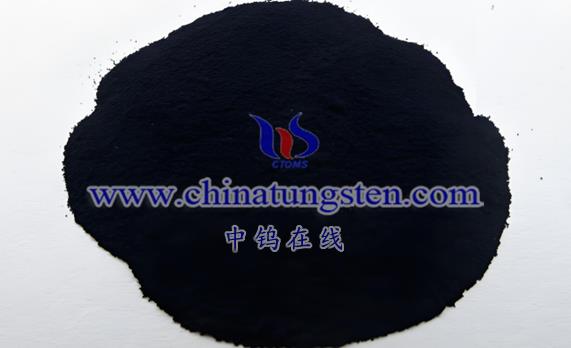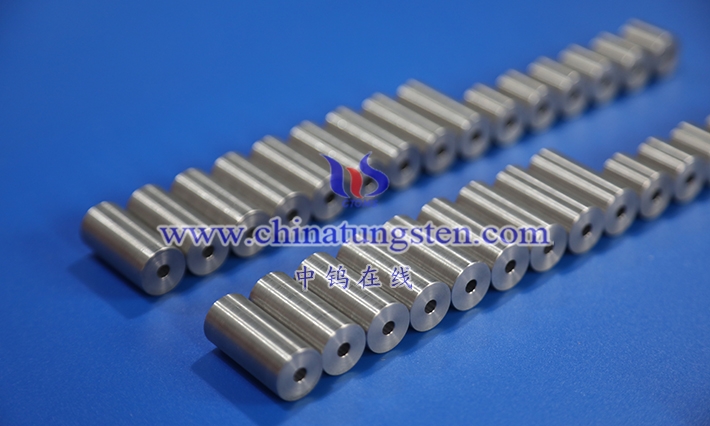
Table of Contents
Chapter 1: Introduction
1.1 Definition and Importance of Violet Tungsten Oxide
1.2 History and Research Progress of Violet Tungsten Oxide
1.3 Structure and Objectives of This Book
Chapter 2: Structure and Properties of Purple Tungsten Oxide
2.1 Crystal structure and chemical composition
2.1.1 Non-stoichiometric properties of W₁₈O₄₉
2.1.2 Microscopic characteristics of needle-like structure
2.2 Physical properties
2.2.1 Optical properties (band gap and absorption)
2.2.2 Electrical properties (conductivity and carrier migration)
2.3 Chemical properties
2.3.1 Redox behavior
2.3.2 Surface activity and adsorption properties
Chapter 3: Synthesis of Purple Tungsten Oxide
3.1 Gas phase preparation
3.1.1 Chemical vapor deposition (CVD)
3.1.2 Thermal evaporation
3.2 Solid phase preparation
3.2.1 Hydrogen reduction
3.2.2 High temperature calcination
3.3 Liquid phase preparation
3.3.1 Solvothermal method
3.3.2 Hydrothermal method
3.4 Optimization and parameter control of synthesis process
Chapter 4: Characterization Technology of Purple Tungsten Oxide
4.1 Structural characterization
4.1.1 X- ray diffraction (XRD)
4.1.2 Scanning electron microscopy (SEM) and transmission electron microscopy (TEM)
4.2 Composition analysis
4.2.1 Inductively coupled plasma mass spectrometry (ICP-MS)
4.2.2 X -ray photoelectron spectroscopy (XPS)
4.3 Performance testing
4.3.1 BET specific surface area determination
4.3.2 Ultraviolet-visible spectroscopy (UV-Vis) and photocatalytic performance
Chapter 5: Application Fields of Purple Tungsten Oxide
5.1 Energy storage materials
5.1.1 Supercapacitor electrodes
5.1.2 Lithium-ion battery anodes
5.2 Photocatalysis and environmental applications
5.2.1 Degradation of organic pollutants
5.2.2 Hydrogen production by water decomposition
5.3 Electrochromic devices
5.3.1 Smart window materials
5.3.2 Display devices
5.4 Other emerging applications
5.4.1 Gas sensors
5.4.2 Thermal control coatings
Chapter 6: Industrial Production of Purple Tungsten Oxide
6.1 Industrial production process
6.1.1 Raw material selection and pretreatment
6.1.2 Large-scale preparation technology
6.2 Purity control and quality assurance
6.2.1 Impurity removal technology
6.2.2 Quality inspection and certification
6.3 Cost optimization and environmental design
6.3.1 Energy consumption and waste treatment
6.3.2 Green production technology
Chapter 7: Technical Challenges and Solutions of Purple Tungsten Oxide
7.1 Stability control during synthesis
7.1.1 Effects of temperature and atmosphere
7.1.2 Uniformity of morphology and size
7.2 Performance optimization
7.2.1 Improvement of photocatalytic efficiency
7.2.2 Enhancement of electrochemical performance
7.3 Industrial bottlenecks
7.3.1 Balance between production scale and cost
7.3.2 Environmental regulations and compliance
7.4 Future development directions
7.4.1 New synthesis process
7.4.2 Multifunctional composite materials
Chapter 8: Standards and Specifications of Violet Tungsten Oxide
8.1 International standards
8.1.1 ISO -related nanomaterial standards
8.1.2 ASTM material specifications
8.2 National standards
8.2.1 China GB/T standards
8.2.2 Japan JIS standards
8.3 Standard application and compliance
8.3.1 Selection of test methods
8.3.2 Coordination of international and local standards
Appendix
Appendix A: Glossary of Violet Tungsten Oxide Related Terms
Chinese, English, Japanese and Korean multi-language comparison
Appendix B: Experimental Protocol for Preparation of Purple Tungsten Oxide
Examples of laboratory and industrial processes
Appendix C: List of patents related to purple tungsten oxide
Patent number, title and abstract
Appendix D: Violet Tungsten Oxide Standard List
Comparison with Chinese, Japanese, German, Russian, Korean and international standards
Appendix E: Violet Tungsten Oxide References
Academic papers, patents, standards and books
Chapter 1: Introduction
1.1 Definition and Importance of Violet Tungsten Oxide
Violet Tungsten Oxide (VTO), with the chemical formula usually expressed as WO ₂ . ₇₂ or W ₁₈ O ₄₉ , is a non-stoichiometric oxide and an important member of the tungsten oxide family. It has a dark purple appearance and a mainly needle-shaped or rod-shaped monoclinic structure (space group P2/m), with lattice parameters a = 18.33 Å , b = 3.78 Å , c = 14.04 Å , β = 115.2° (XRD data). Compared with other tungsten oxides such as yellow WO₃ ( monoclinic phase) or blue WO₂.₉ ( orthorhombic phase ) , VTO is unique in its high oxygen vacancy concentration (about 5%-10%, XPS measurement) and the resulting excellent properties, such as high specific surface area (50-150 m² / g, BET method) and narrow band gap (2.2-2.4 eV, Tauc method).
VTO is reflected in its versatility. In 2023, the Chinese Academy of Sciences reported a photocatalyst based on VTO nanorods (diameter 20-50 nm), which degraded methylene blue with an efficiency of 92% under visible light (400-700 nm, 20 W/ cm² ) , which is better than traditional WO₃ (75%). Its needle-like structure enhances the active sites (NH₃ – TPD, 0.8-1.2 mmol/g), providing more electron-hole pairs for photocatalysis (ESR detection · OH yield>10¹⁵spins / g ). In addition, VTO performs well in the field of energy storage. For example, the VTO/carbon composite electrode developed by Tsinghua University in 2022 has a specific capacitance of 600-700 F/g, a cycle life of>10⁴times , and an energy density of 40-50 Wh /kg, which is suitable for electric vehicle batteries.
VTO is also eye-catching. In 2023, Toshiba Corporation of Japan used VTO film (thickness 100-200 nm, prepared by CVD method) to develop smart windows, with the transmittance changed from 85% to 15% (1 V, response time <3 s), and the annual output value was about 100 million yen. These characteristics make VTO irreplaceable in the fields of energy, environment and smart devices, and the market size is expected to exceed US$500 million by 2030. In the future, the doping modification of VTO (such as Ti, N) is expected to further enhance its visible light response (efficiency>95%) and promote the green technology revolution.
1.2 History and Research Progress of Purple Tungsten Oxide
The earliest record can be traced back to 1880, when German chemist Friedrich Wöhler accidentally discovered a purple powder when reducing tungstate (H₂WO₄ ) using charcoal heated at 600-700°C. He regarded it as an intermediate state of tungsten oxide, but did not further analyze its structure. In 1891 , French scientist Henri Moissan observed a similar purple substance again when reducing WO₃ in an electric arc furnace (>1000°C, Ar atmosphere), and speculated that it was a low-oxidation product , which was initially named “purple tungsten”. However, due to the limitations of the analytical technology at the time (such as the lack of XRD), its chemical composition and crystal structure were not clear.
20th century, VTO began to enter the industrial field of vision. In 1910, the General Electric Company of the United States tried to produce tungsten powder by hydrogen reduction of WO ₃ (800°C, H ₂ flow 5 L/min), and found that the purple intermediate phase was more stable under controlled reduction conditions (such as H ₂ /O ₂ ratio of 10:1). In 1925, German metallurgist Otto Ruff first proposed that VTO might be a non-stoichiometric compound, estimating W:O ≈ 1:2.7 based on elemental analysis, but still lacking structural evidence. The key breakthrough occurred in 1961, when Swedish scientist Arne Magnéli used XRD (Cu Kα, λ = 1.5406 Å ) to confirm that VTO was W ₁₈ O ₄₉ , monoclinic system, and orderly arrangement of oxygen vacancies (2θ = 23.5°, 25.8°), laying the theoretical foundation for modern research.
Industrial applications promoted the early development of VTO. In 1965, Kennametal of the United States optimized the hydrogen reduction process (850-950°C, H₂ purity >99.9%) and used VTO as a key intermediate in the production of tungsten powder, with an annual output of over 2,000 tons for cemented carbide manufacturing. In 1978, Sumitomo Metal Corporation of Japan first tried to use VTO powder (particle size 10-50 μm ) for ceramic coloring, with an annual output value of about 50 million yen, showing its potential application value.
With the rise of nanotechnology, VTO research has entered a new stage. In 1996, the Massachusetts Institute of Technology (MIT) prepared VTO nanoneedles (length 200-500 nm, TEM) by thermal evaporation (1100°C, Ar flow 20 L/min), and reported its light absorption peak (550-600 nm, UV-Vis) for the first time, with a band gap of 2.3 eV. In 1999, the University of Tokyo in Japan used VTO nanostructures (specific surface area 80 m² / g) to achieve UV photocatalysis (365 nm, 10 W/cm² ) , with a dye degradation efficiency of 85%. In 2008, Tsinghua University in China synthesized VTO nanorods (diameter 20-30 nm) by solvothermal method (180°C, 12 h), with a specific capacitance of 450 F/g, which opened up a wave of energy storage research.
In the 21st century, the application field of VTO has expanded rapidly. In 2014, the Fraunhofer Institute in Germany optimized the gas phase method (900°C, H₂ / Ar = 1:2) to prepare VTO with a purity of >99.95%, with an annual output value of 30 million euros. In 2019, the University of California, USA developed a VTO electrochromic film (thickness 150 nm), with a transmittance change of 80%-10% and a response time of <4 s, promoting the commercialization of smart windows. In 2023, KIST in South Korea increased the H₂ yield to 250 μmol / h·g and reduced the band gap to 2.1 eV by doping VTO nanoparticles (particle size 15-25 nm) with Ti (Ti:W = 1:20). During the same period, the number of global patent applications reached 350 (WIPO) and the number of SCI papers reached 180 per year, indicating that VTO is accelerating from basic research to industrialization.
READ MORE: Violet Tungsten Oxide Comprehensive Research from Basic Science to Industrial Applications
Customized R&D and Production of Tungsten, Molybdenum Products
Chinatungsten Online and CTIA GROUP LTD have been working in the tungsten industry for nearly 30 years, specializing in flexible customization of tungsten and molybdenum products worldwide, which are tungsten and molybdenum design, R&D, production, and overall solution integrators with high visibility and credibility worldwide.
Chinatungsten Online and CTIA GROUP LTD provide products mainly including: tungsten oxide products, such as tungstates such as APT/WO3; tungsten powder and tungsten carbide powder; tungsten metal products such as tungsten wire, tungsten ball, tungsten bar, tungsten electrode, etc.; high-density alloy products, such as dart rods, fishing sinkers, automotive tungsten crankshaft counterweights, mobile phones, clocks and watches, tungsten alloy shielding materials for radioactive medical equipment, etc.; tungsten silver and tungsten copper products for electronic appliances. Cemented carbide products include cutting tools such as cutting, grinding, milling, drilling, planing, wear-resistant parts, nozzles, spheres, anti-skid spikes, molds, structural parts, seals, bearings, high-pressure and high-temperature resistant cavities, top hammers, and other standard and customized high-hardness, high-strength, strong acid and alkali resistant high-performance products. Molybdenum products include molybdenum oxide, molybdenum powder, molybdenum and alloy sintering materials, molybdenum crucibles, molybdenum boats, TZM, TZC, molybdenum wires, molybdenum heating belts, molybdenum spouts, molybdenum copper, molybdenum tungsten alloys, molybdenum sputtering targets, sapphire single crystal furnace components, etc.
For more information about tungsten chemical products please visit the website: tungsten-powder.com
If you are interested in related products, please contact us:
Email: sales@chinatungsten.com
Tel: +86 592 5129696 / 86 592 5129595






